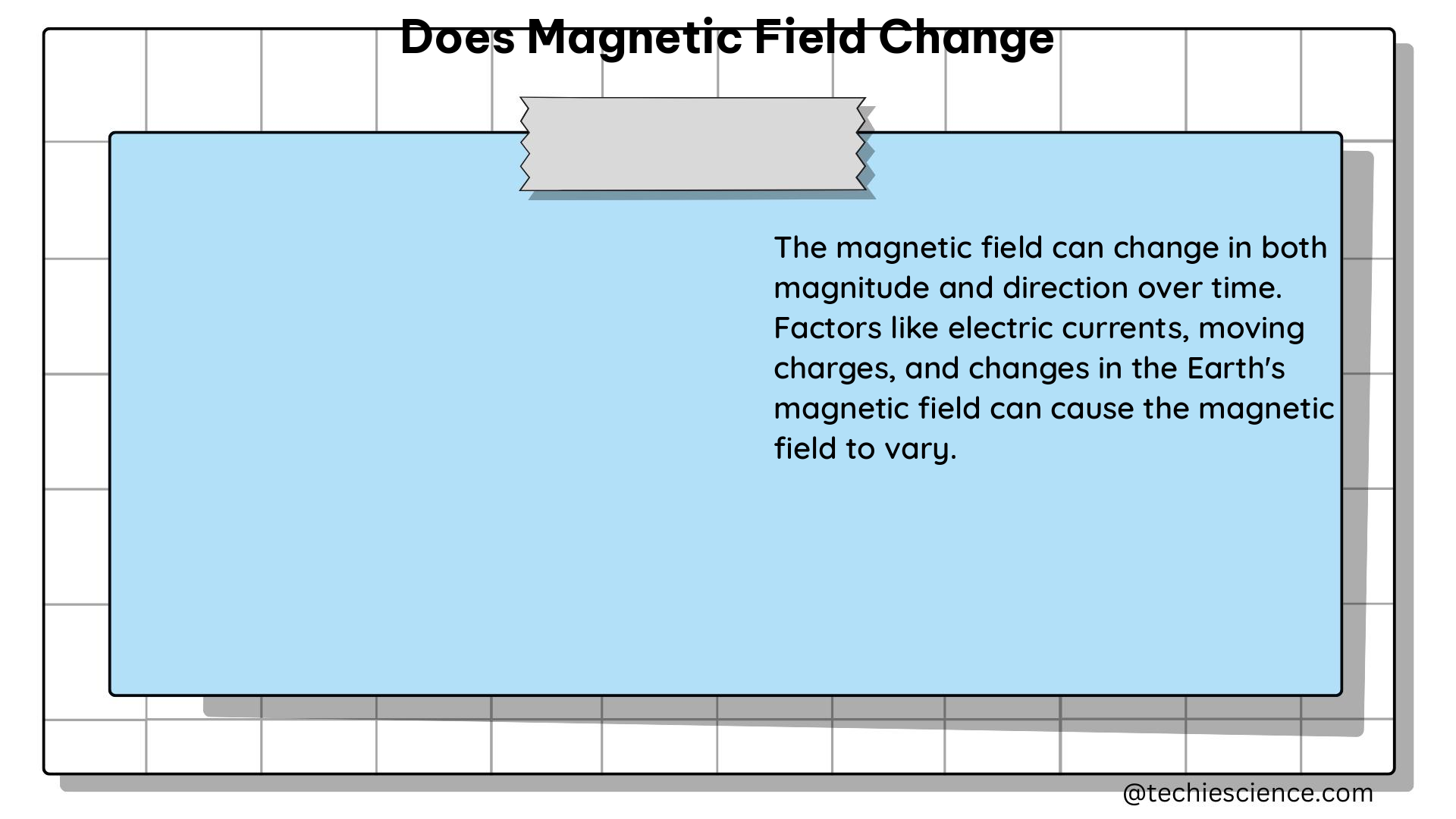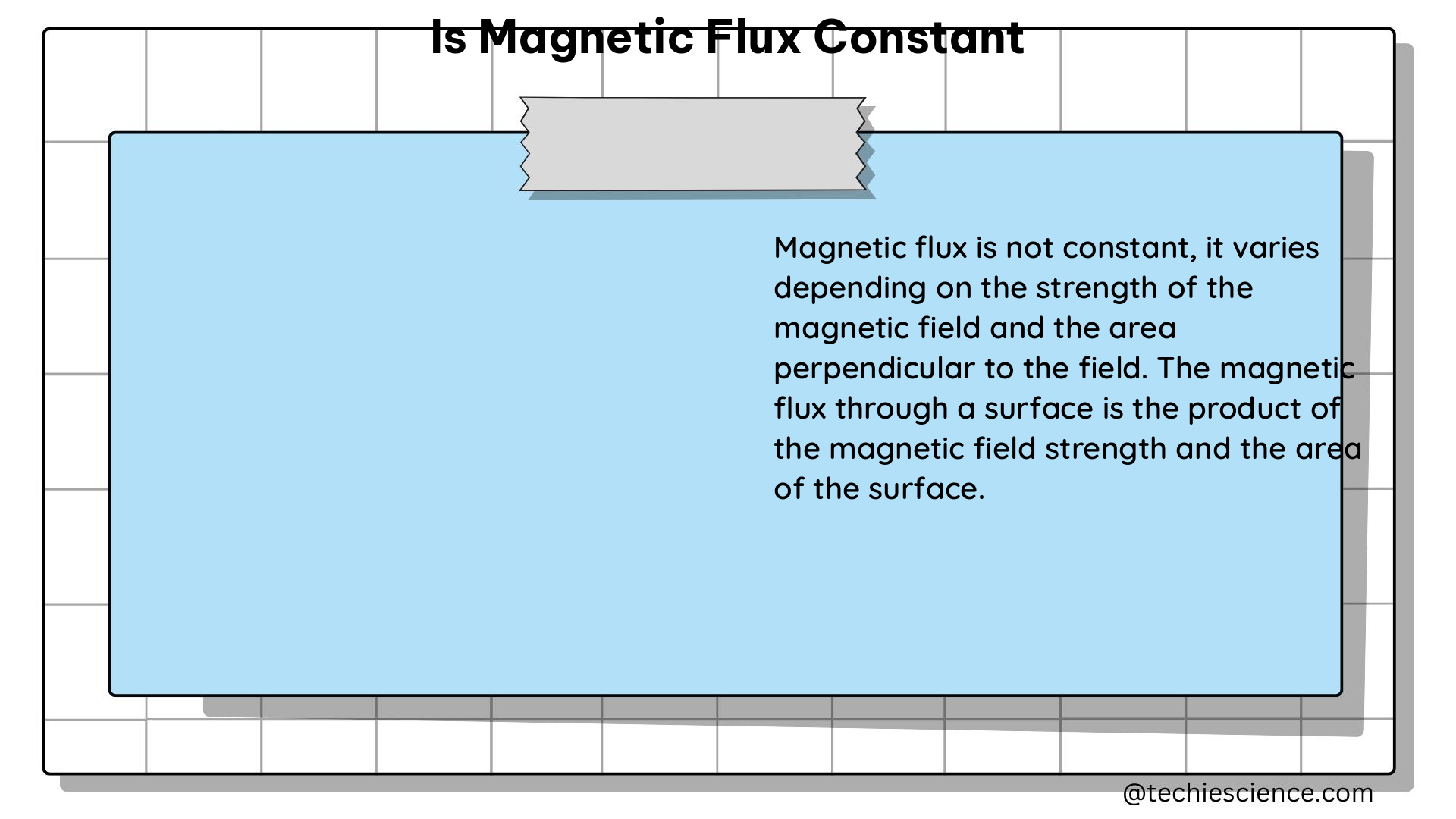The Earth’s magnetic field is a complex and dynamic phenomenon that is constantly changing due to various factors. Understanding the nature of these changes is crucial for a wide range of applications, from navigation and space weather monitoring to geological investigations. In this comprehensive guide, we will delve into the intricacies of how the magnetic field changes, the methods used to measure it, and the implications of these changes.
Factors Influencing Magnetic Field Changes
The magnetic field is influenced by several factors, including:
-
Geographical Location: The Earth’s magnetic field varies significantly across different regions of the planet. This is due to the uneven distribution of magnetic materials within the Earth’s core and the complex interactions between the Earth’s internal and external magnetic sources.
-
Time: The Earth’s magnetic field is not static and undergoes continuous changes over time. These changes can occur on various timescales, from daily fluctuations to long-term reversals that happen every few hundred thousand years.
-
External Magnetic Sources: The presence of other magnetic fields, such as those generated by the Sun, can interact with the Earth’s magnetic field and cause it to change.
Measuring the Earth’s Magnetic Field

The Earth’s magnetic field is measured using a variety of techniques, including:
-
Magnetometers: These instruments measure the strength and direction of the magnetic field. They can be based on different principles, such as the Hall effect, fluxgate, or proton precession.
-
Magnetic Observatories: Approximately 200 magnetic observatories around the world continuously monitor the Earth’s magnetic field, providing valuable data for research and applications.
-
Satellite Measurements: Satellites equipped with magnetometers can measure the Earth’s magnetic field from space, providing a global perspective and insights into the field’s structure and dynamics.
The Earth’s magnetic field is described by seven parameters:
- Declination (D): The angle between true north and magnetic north.
- Inclination (I): The angle between the horizontal plane and the direction of the magnetic field.
- Horizontal Intensity (H): The strength of the horizontal component of the magnetic field.
- North (X) and East (Y) Components: The north and east components of the horizontal intensity.
- Vertical Intensity (Z): The strength of the vertical component of the magnetic field.
- Total Intensity (F): The overall strength of the magnetic field.
These parameters are used to characterize the Earth’s magnetic field and its changes over time.
Magnetic Field Reversals
The Earth’s magnetic field is not constant and can undergo reversals, where the north and south magnetic poles swap positions. These reversals are relatively rare, occurring every few hundred thousand years on average. During a reversal, the magnetic field intensity can decrease by as much as 90% at the Earth’s surface.
Magnetic field reversals are of great interest to scientists as they provide insights into the dynamics of the Earth’s core and the processes that generate the magnetic field. Understanding these reversals is also crucial for various applications, such as navigation and the study of the Earth’s geological history.
Measuring Magnetic Field Changes
The changes in the Earth’s magnetic field can be measured using a variety of techniques, including:
-
Hall Effect: The Hall effect is a phenomenon where a voltage difference is generated across a material when it is subjected to a magnetic field. By measuring this voltage difference, the strength of the magnetic field can be determined.
-
Fluxgate Magnetometers: Fluxgate magnetometers are sensitive instruments that can measure the strength and direction of the magnetic field. They work by detecting changes in the magnetic flux within a core material.
-
Proton Precession Magnetometers: These magnetometers measure the precession of protons in a magnetic field, which is directly related to the strength of the field.
-
Superconducting Quantum Interference Devices (SQUIDs): SQUIDs are highly sensitive magnetometers that can detect even the smallest changes in the magnetic field. They are often used in research and specialized applications.
Applications of Magnetic Field Measurements
The measurement and understanding of the Earth’s magnetic field changes have numerous applications, including:
-
Navigation: The magnetic field is used for navigation, both on land and at sea, as it provides a reference for determining direction.
-
Space Weather Monitoring: Monitoring the changes in the Earth’s magnetic field is crucial for understanding and predicting space weather, which can affect satellite operations, communication systems, and power grids.
-
Geological Investigations: Studying the Earth’s magnetic field can provide insights into the planet’s geological history, including the formation of continents and the movement of tectonic plates.
-
Mineral Exploration: Magnetic field measurements can be used to detect the presence of magnetic minerals, which can aid in the exploration and extraction of valuable resources.
-
Archeological Surveys: Magnetic field measurements can be used to detect and map buried archaeological features, such as ancient structures and artifacts.
Conclusion
The magnetic field is a dynamic and complex phenomenon that is constantly changing due to various factors. Understanding these changes and the methods used to measure them is crucial for a wide range of applications, from navigation and space weather monitoring to geological investigations and mineral exploration. By delving into the intricacies of magnetic field changes, physics students can gain a deeper understanding of this fundamental aspect of the physical world and its practical implications.







